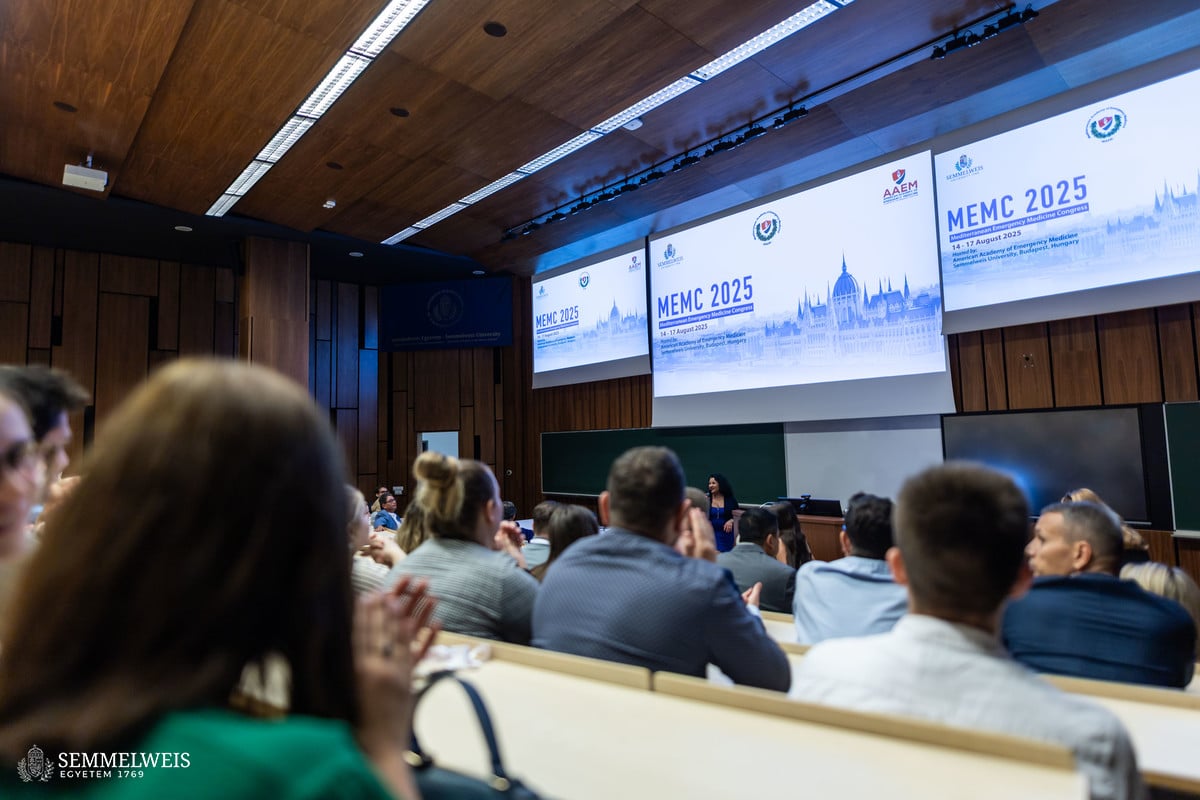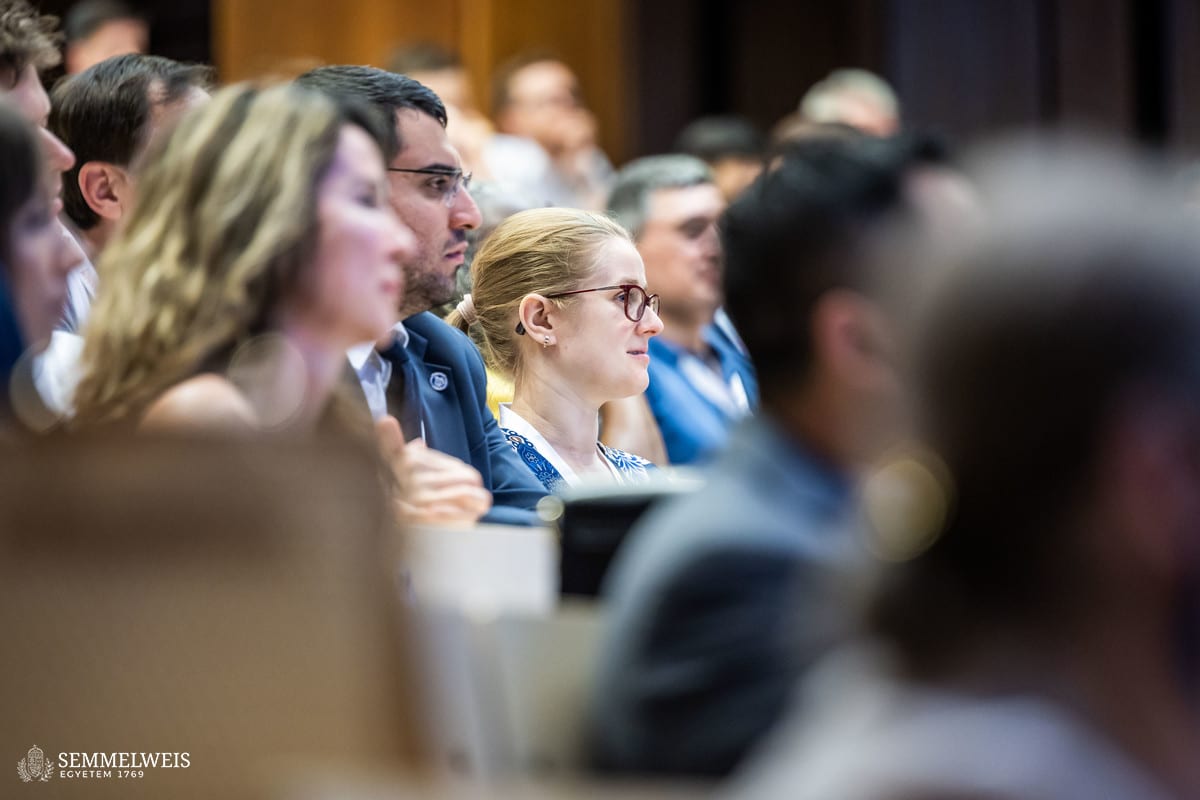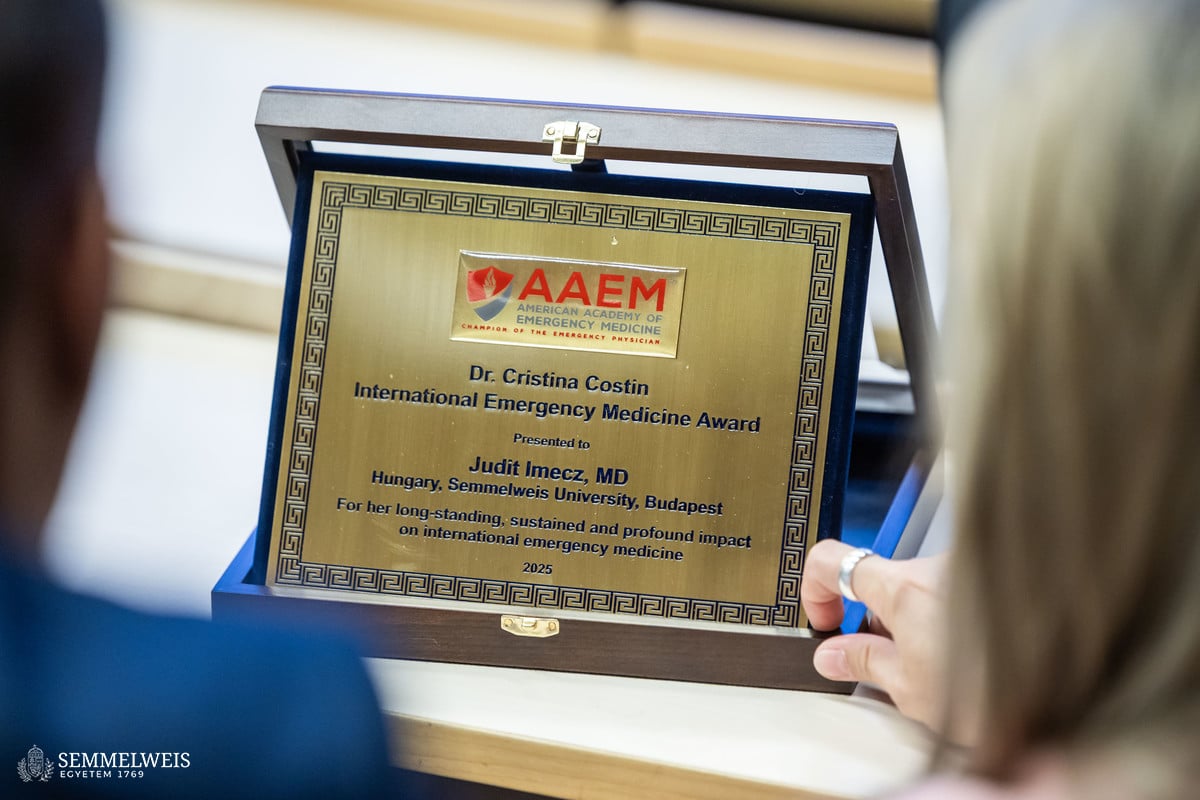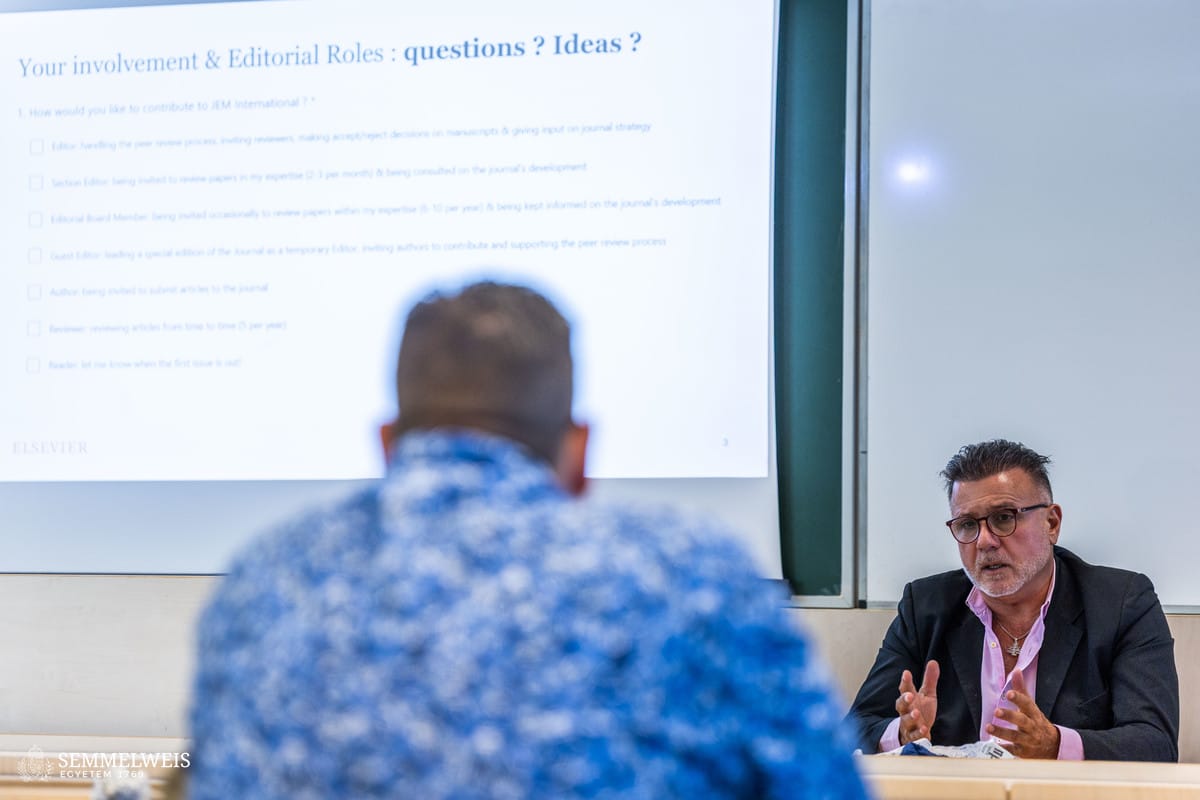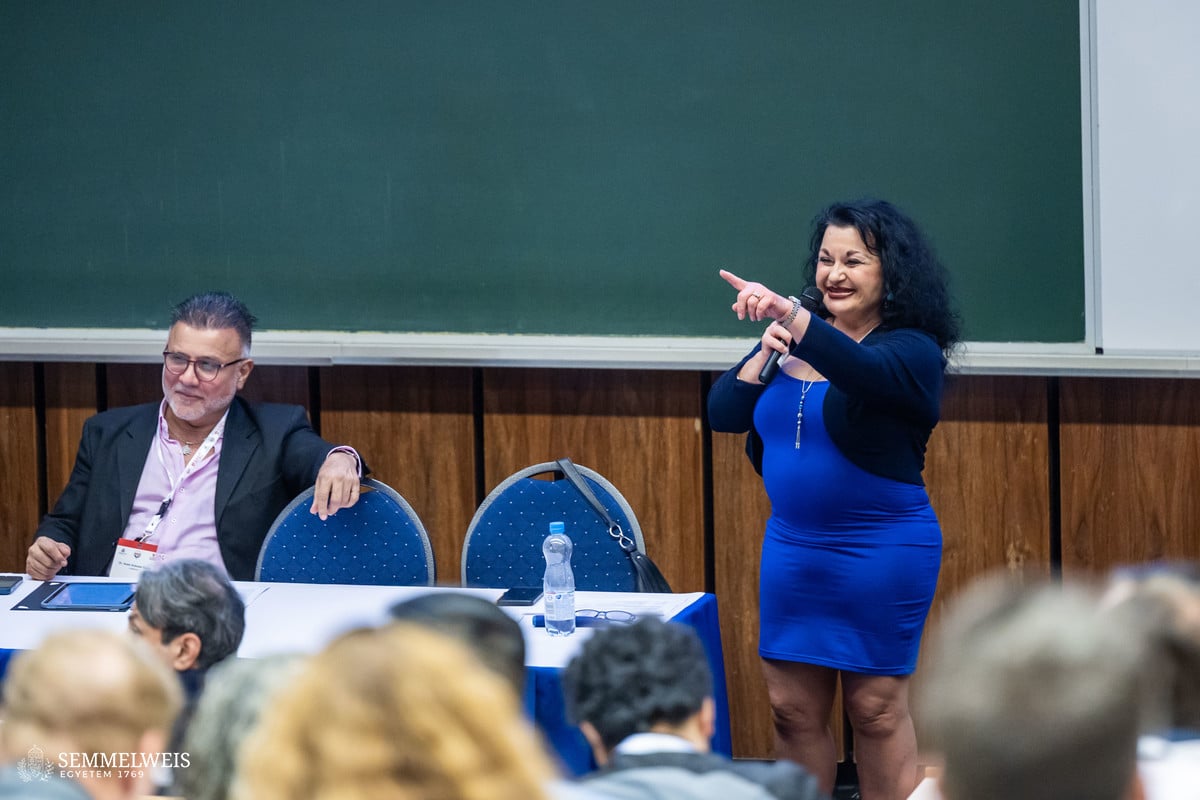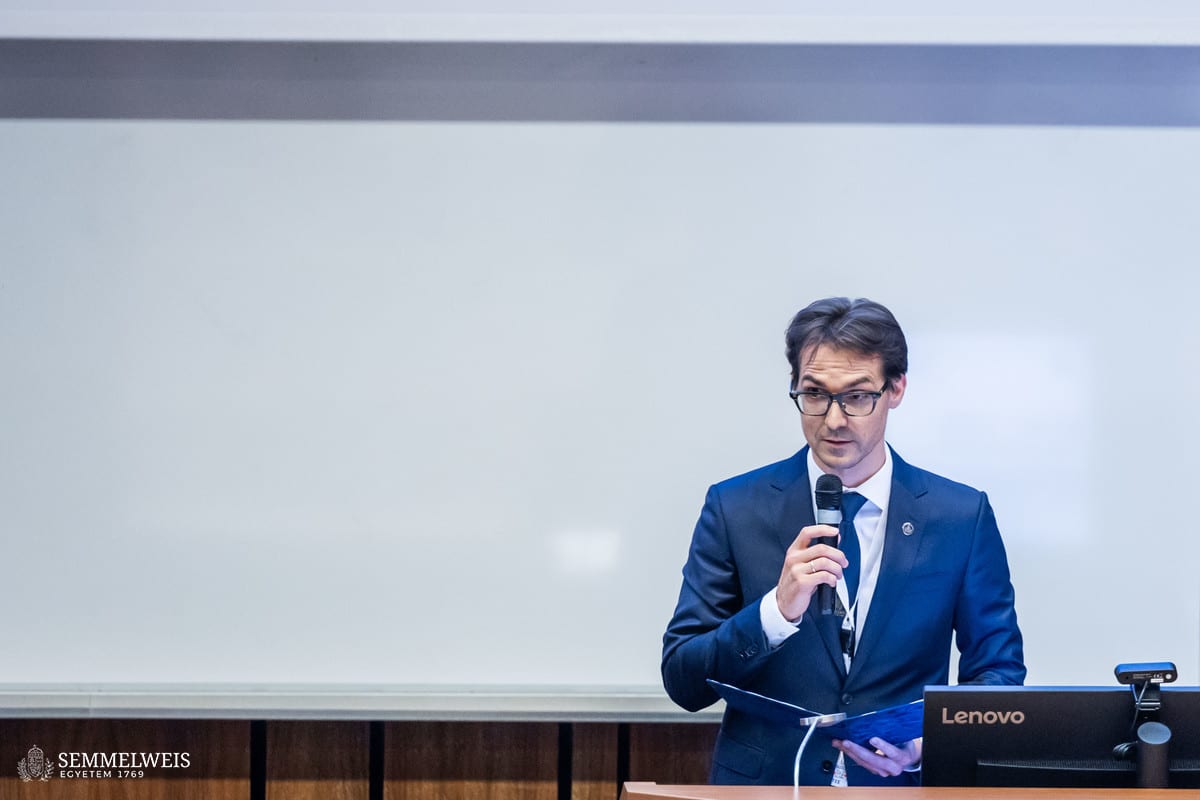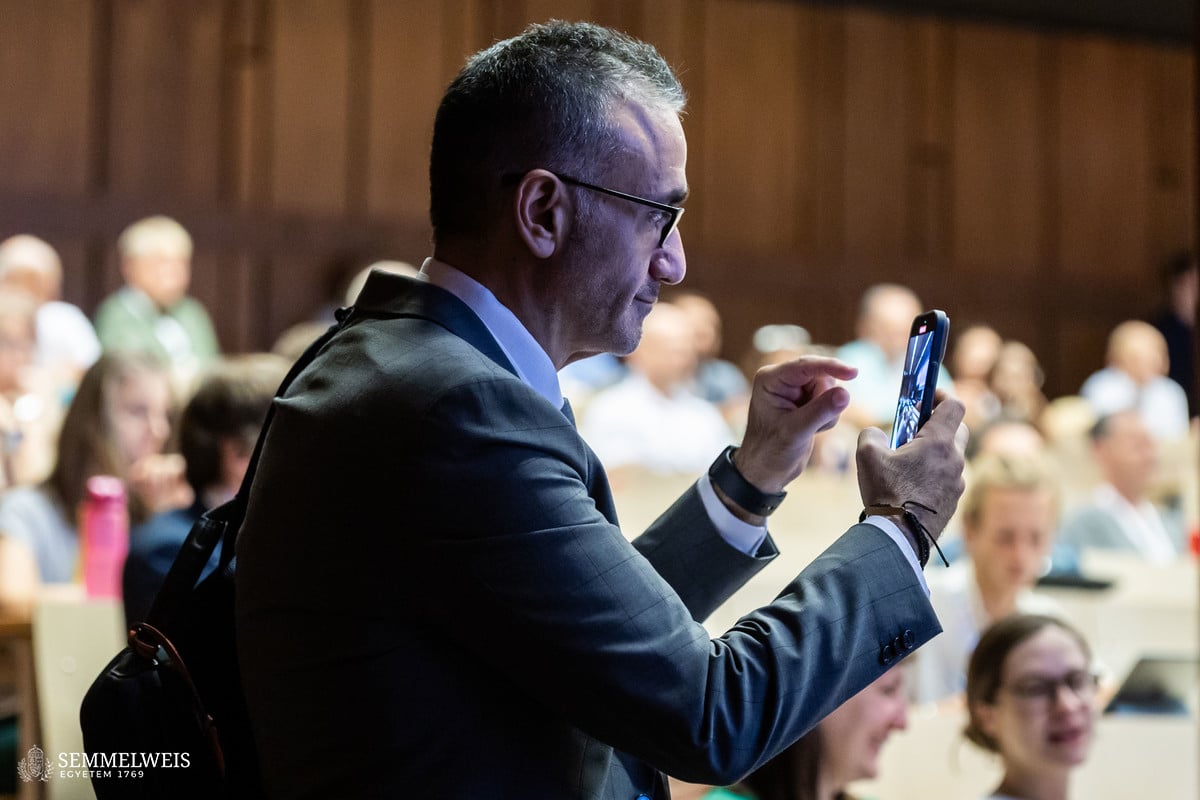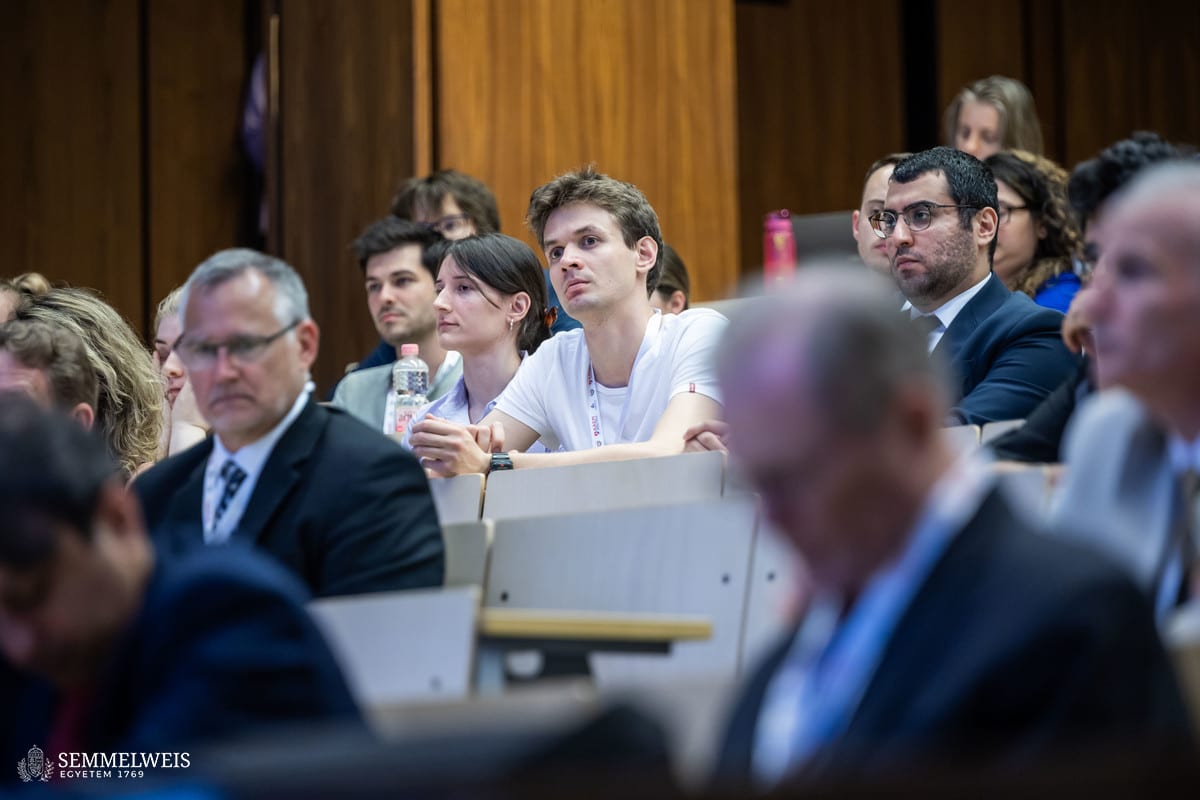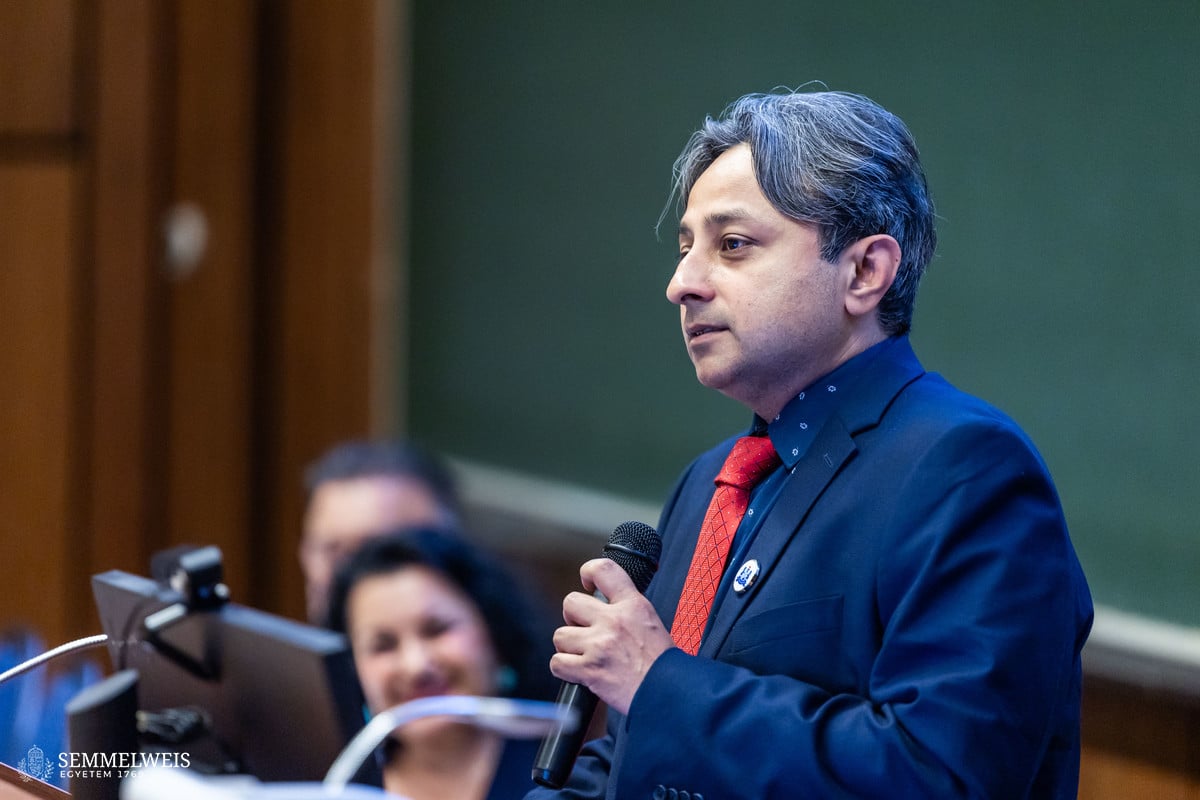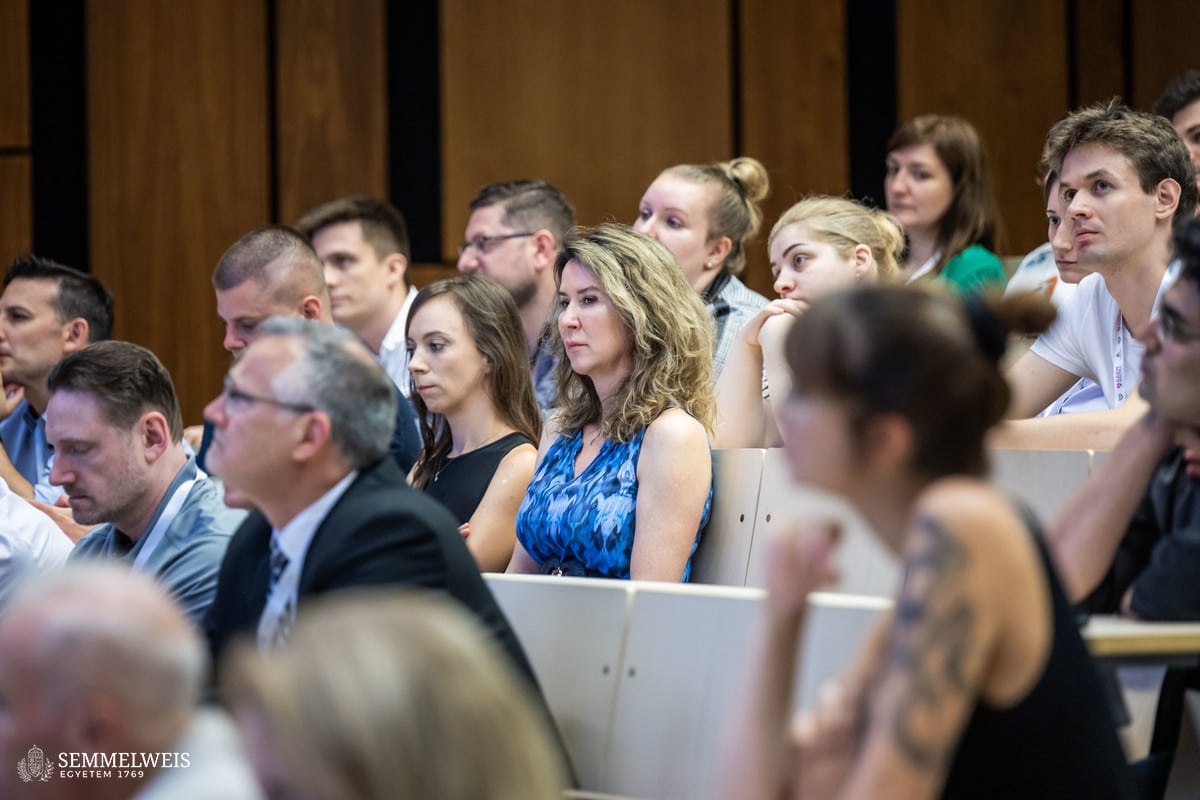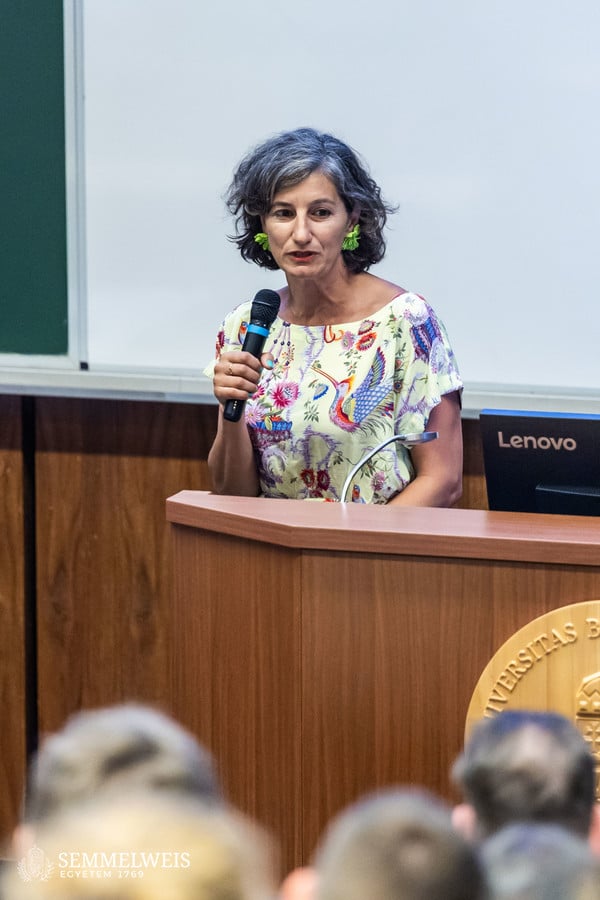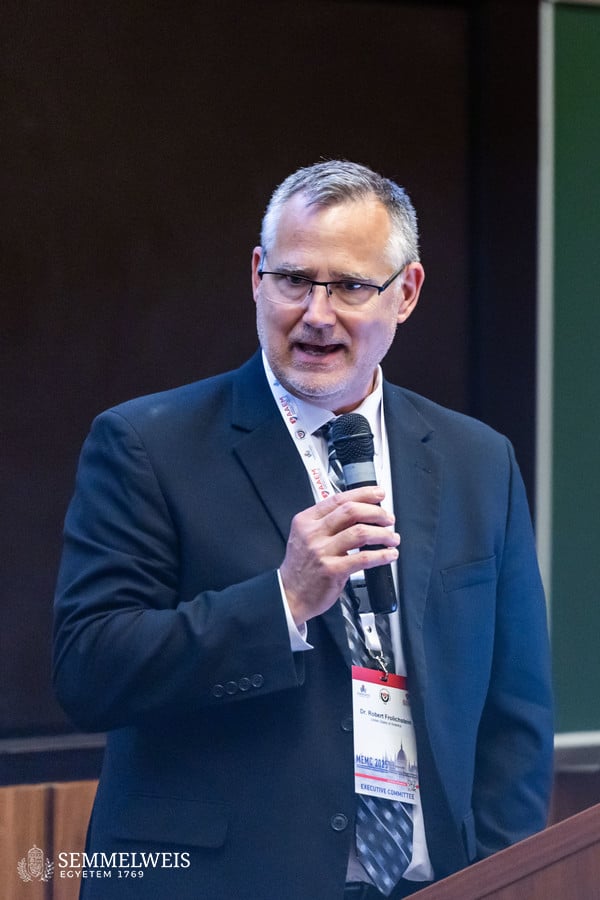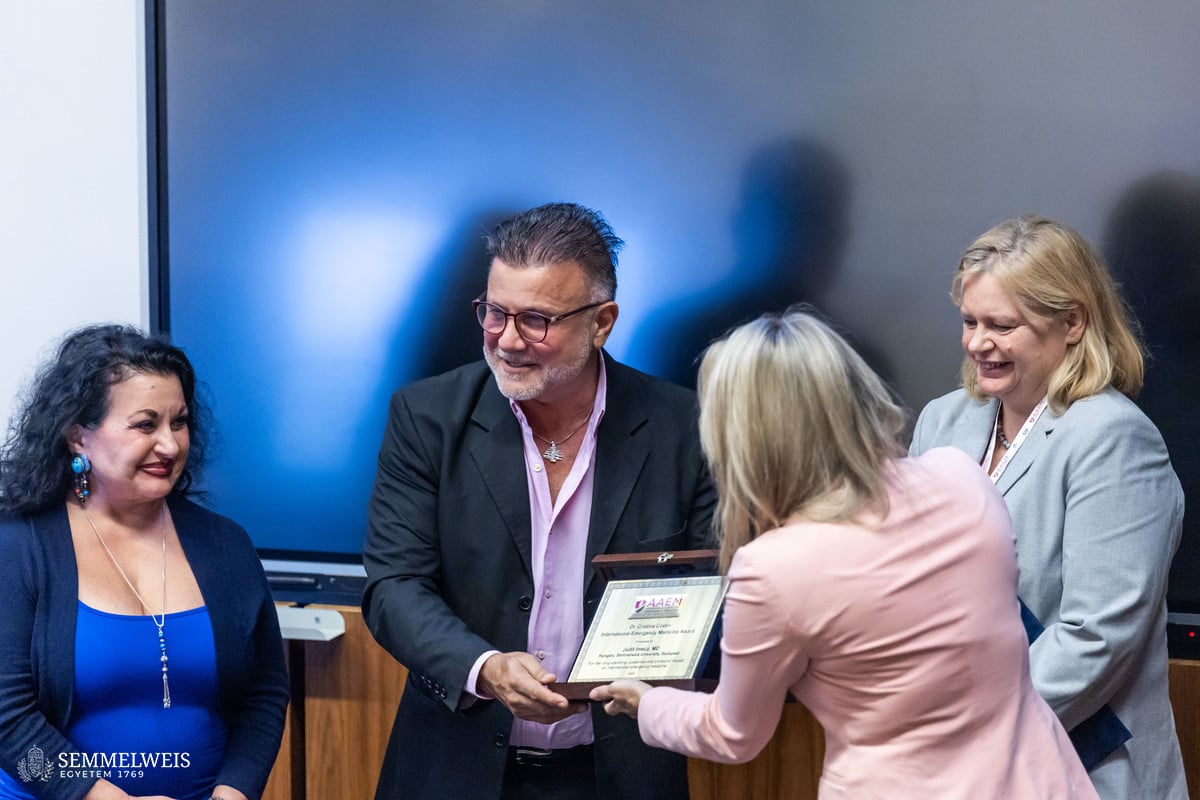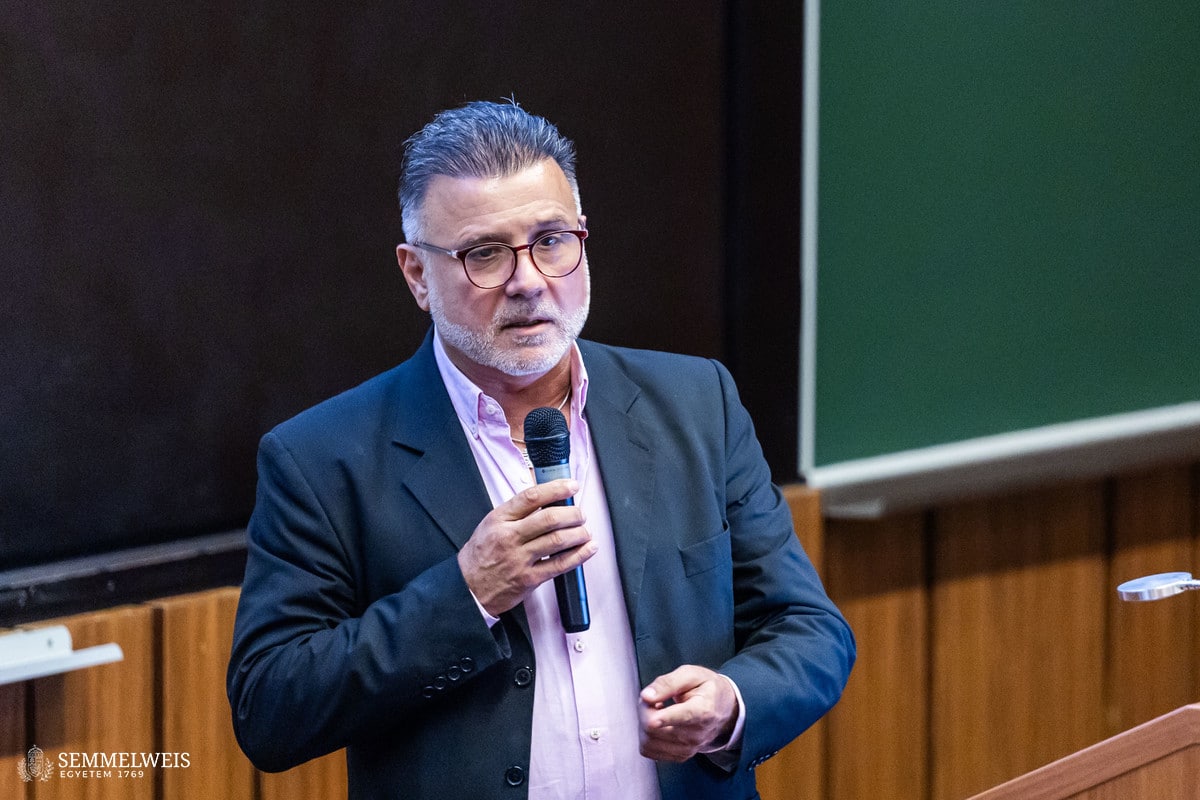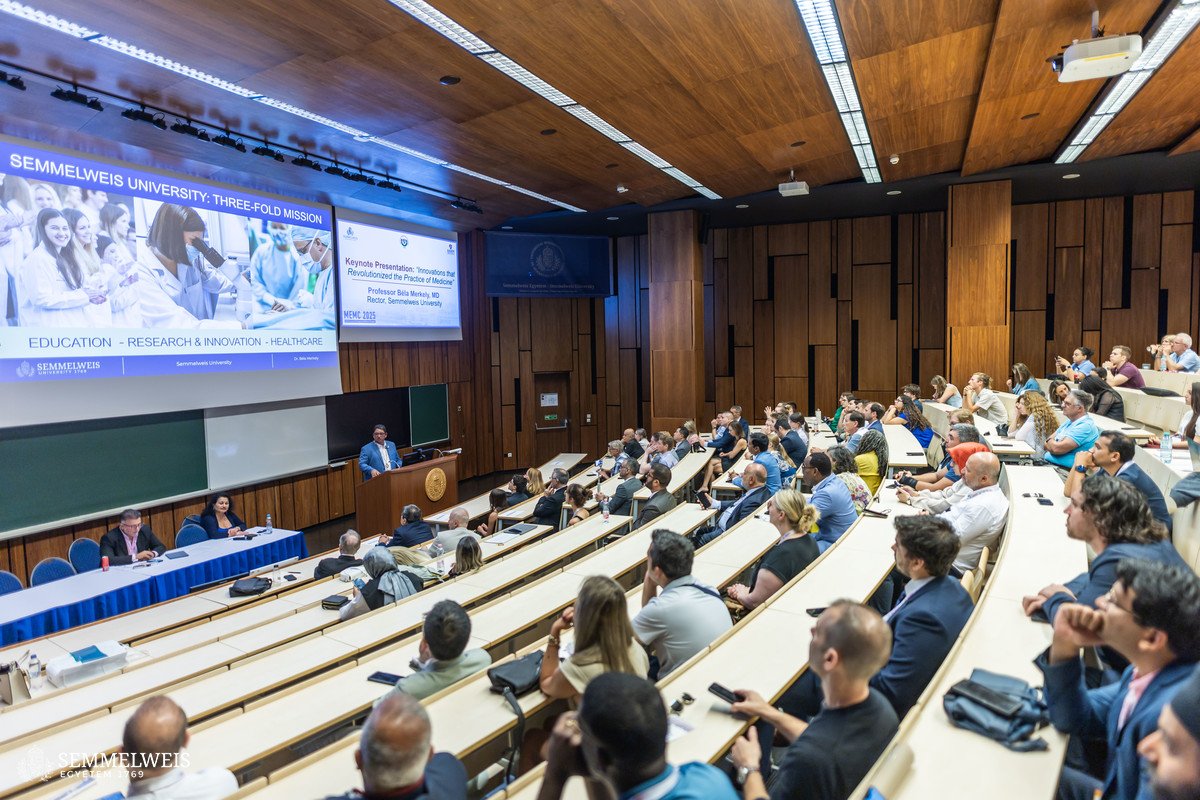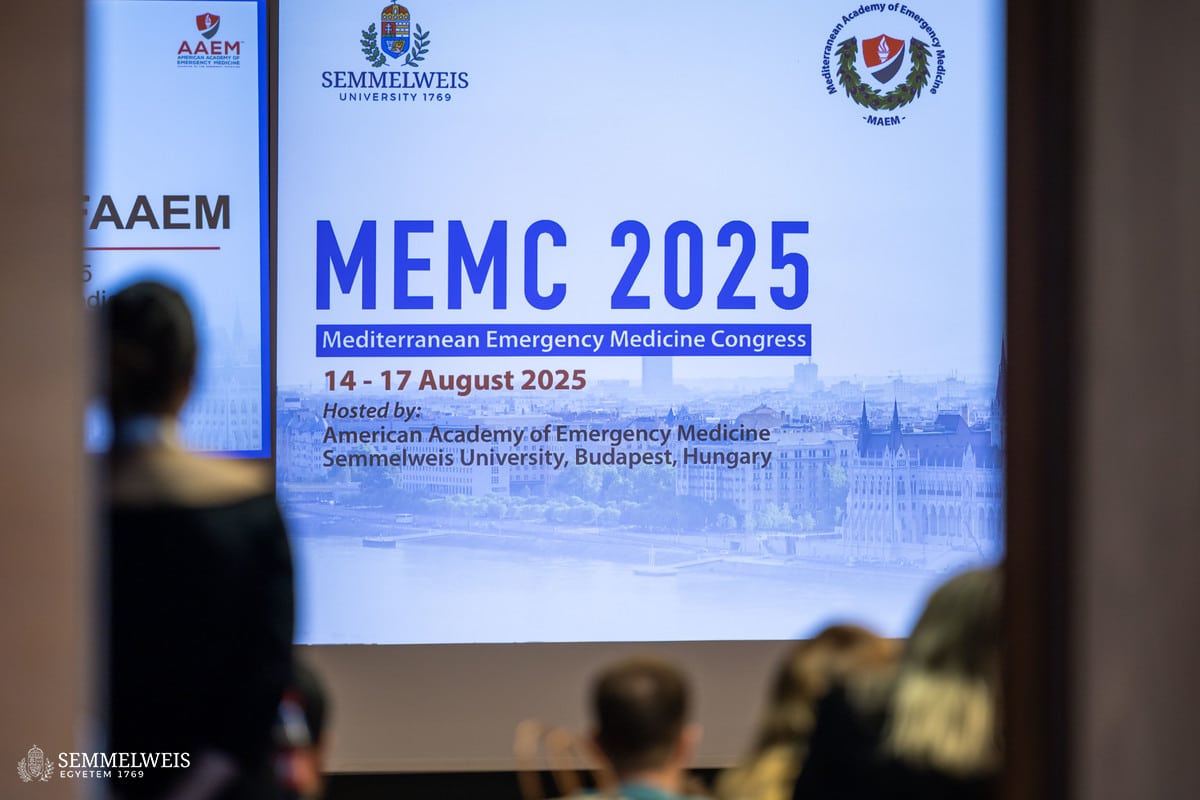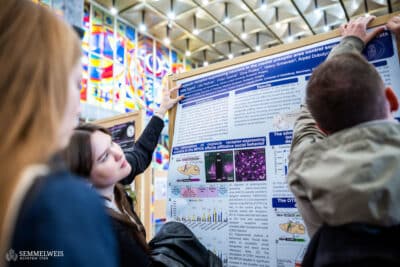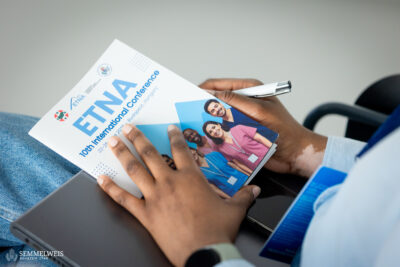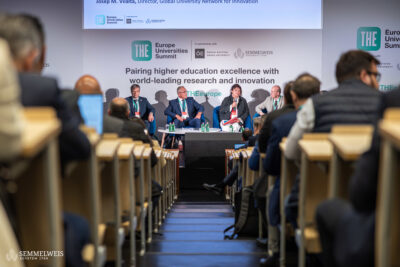This year, Budapest hosted the 13th edition of the Mediterranean Emergency Medicine Congress (MEMC), which brought together renowned speakers and hundreds of professionals from the United States, Europe, and the Mediterranean region. The biennial event, which is held at different locations each time, is organized by the Mediterranean Academy of Emergency Medicine (MAEM) with the support of the American Academy of Emergency Medicine (AAEM) and, this year, with the cooperation of Semmelweis University’s Department of Emergency Medicine (SOK).
At the convivial opening ceremony, Dr. Lisa Moreno, Chair of the MEMC Organizing Committee, and Dr. Rasha Sawaya, Chair of the MEMC Scientific Committee, briefly welcomed the participants of the 25-year-old congress.
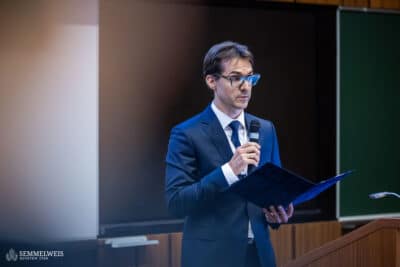 In his opening address, Dr. Bánk Fenyves, Director of SOK, honored Dr. Géza Kresz, the pioneer of emergency medicine in Hungary. As the founder and leader of the Budapest Volunteer Rescue Association (BÖME), Dr. Géza Kresz laid the foundations for organized emergency medical services in Hungary at the end of the 19th century. The established emergency hospital was the first on the continent built specifically for this purpose and run by physicians. Dr. Bánk Fenyves explained that the modern form of emergency medical care had been operating in Hungary since 2002. Since then, it has developed into a specialized field providing comprehensive pre-hospital and hospital care, and emergency departments are now required to employ qualified emergency physicians. The university’s Emergency Room Department began its operations in 2016 before becoming a clinic in 2021. Currently, the Department of Emergency Medicine treats 48,000 cases annually, making it one of the largest healthcare providers in the capital. He also mentioned that during the last two MEMC congresses, the clinic’s staff delivered a number of oral and poster presentations and won first prize in the abstract competition for two consecutive years. “These successes did much more than honor our work. In a sense, they have promoted the international recognition of the Hungarian emergency medical community and the Department of Emergency Medicine, ultimately leading to Budapest being chosen as the host city for this year’s conference.” He added that the event offered an opportunity to strengthen academic and clinical partnerships, foster networking across borders, share best practices that improve patient outcomes, inspire and connect the next generation of emergency care providers, practitioners, residents, and students, and further develop a vision of excellence and innovation.
In his opening address, Dr. Bánk Fenyves, Director of SOK, honored Dr. Géza Kresz, the pioneer of emergency medicine in Hungary. As the founder and leader of the Budapest Volunteer Rescue Association (BÖME), Dr. Géza Kresz laid the foundations for organized emergency medical services in Hungary at the end of the 19th century. The established emergency hospital was the first on the continent built specifically for this purpose and run by physicians. Dr. Bánk Fenyves explained that the modern form of emergency medical care had been operating in Hungary since 2002. Since then, it has developed into a specialized field providing comprehensive pre-hospital and hospital care, and emergency departments are now required to employ qualified emergency physicians. The university’s Emergency Room Department began its operations in 2016 before becoming a clinic in 2021. Currently, the Department of Emergency Medicine treats 48,000 cases annually, making it one of the largest healthcare providers in the capital. He also mentioned that during the last two MEMC congresses, the clinic’s staff delivered a number of oral and poster presentations and won first prize in the abstract competition for two consecutive years. “These successes did much more than honor our work. In a sense, they have promoted the international recognition of the Hungarian emergency medical community and the Department of Emergency Medicine, ultimately leading to Budapest being chosen as the host city for this year’s conference.” He added that the event offered an opportunity to strengthen academic and clinical partnerships, foster networking across borders, share best practices that improve patient outcomes, inspire and connect the next generation of emergency care providers, practitioners, residents, and students, and further develop a vision of excellence and innovation.
Dr. Sagar Galwankar, Past President and Chief Academic Officer of the World Academic Council of Emergency Medicine (WACEM), discussed the importance of training, quick decision-making, and taking responsibility. In his words, contrary to popular belief, emergency care was more than just resuscitation, the ATLS protocol for treating critically injured patients, or the ACLS protocol for cardiovascular life support: Effective emergency patient care meant keeping the flow of care. He also pointed out that when training the next generation of professionals, it was important to be able to address the current generation of medical students.
In his welcome speech, Dr. Robert Frolichstein, President of AAEM, spoke highly of Hungarian emergency medical care, which, he believed, was in many ways more advanced than the system in the United States. He recalled that since its launch, the American Academy of Emergency Medicine had been advocating for working conditions that were necessary for emergency physicians to provide the highest standard of care. Despite their cultural, socioeconomic, and geopolitical differences, those working in this field are united by their commitment to their patients, which often requires them to devote their time, energy, family life, nights, and holidays to their care. Given the changes that have occurred in recent decades, he concluded that greater emphasis had to be placed on international cooperation and mutual assistance.
Dr. Amin Antoine Kazzi, President of MAEM, shared his personal experiences with emergency medicine and the Mediterranean Academy of Emergency Medicine. He reminded the audience of the motto of the profession: Emergency medicine is when minutes count. He emphasized that this year’s event was one of the most successful in recent memory. More than 620 people from 35 countries registered for the congress, including hundreds who came from other continents. In addition to the international exchange of experiences, the program featured 300 abstracts.
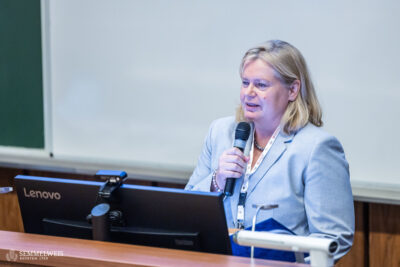 Dr. Judit Bidló, Deputy State Secretary for the Professional Management of Health, stressed that despite its relatively short history, emergency medical care had become an essential part of any advanced healthcare system. She recalled that, although the Hungarian ambulance service dated back more than a century, the current acute care, based on the Anglo-Saxon model, had introduced new perspectives and opportunities to healthcare. She emphasized that the modern approach and adoption of the best international practices were of paramount importance. She therefore described the current congress as an event of not only scientific but also strategic significance.
Dr. Judit Bidló, Deputy State Secretary for the Professional Management of Health, stressed that despite its relatively short history, emergency medical care had become an essential part of any advanced healthcare system. She recalled that, although the Hungarian ambulance service dated back more than a century, the current acute care, based on the Anglo-Saxon model, had introduced new perspectives and opportunities to healthcare. She emphasized that the modern approach and adoption of the best international practices were of paramount importance. She therefore described the current congress as an event of not only scientific but also strategic significance.
During the opening ceremony, the Dr. Cristina Costin International Emergency Medicine Award was presented to Dr. Judit Imecz, a specialist at SOK and Co-Chair of the MEMC25 Scientific Committee. This award recognizes female physicians outside the United States who contribute to the international development of emergency medicine.
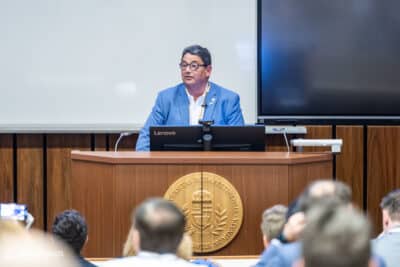 As part of the professional program, Rector Dr. Béla Merkely gave a keynote speech in which he introduced the host of the congress, Semmelweis University, and touched on the intellectual legacy of the institution’s namesake. After providing a brief historical overview, he presented the key figures that characterize the university’s present and future goals. He outlined the first curriculum reform in 2019 and the second one in 2024, which are characterized by modern methodology, practice-oriented education, block teaching in clinical practice, talent management, and mentoring programs to reduce dropout rates and increased cooperation between faculties. He also pointed out that the university’s academic performance increased proportionally with the growing number of doctoral students, as evidenced by the university’s dynamic growth in recent years. He gave a detailed presentation of the flexible PhD program, the institution’s international network, and one of its flagship investments, the Science Park.
As part of the professional program, Rector Dr. Béla Merkely gave a keynote speech in which he introduced the host of the congress, Semmelweis University, and touched on the intellectual legacy of the institution’s namesake. After providing a brief historical overview, he presented the key figures that characterize the university’s present and future goals. He outlined the first curriculum reform in 2019 and the second one in 2024, which are characterized by modern methodology, practice-oriented education, block teaching in clinical practice, talent management, and mentoring programs to reduce dropout rates and increased cooperation between faculties. He also pointed out that the university’s academic performance increased proportionally with the growing number of doctoral students, as evidenced by the university’s dynamic growth in recent years. He gave a detailed presentation of the flexible PhD program, the institution’s international network, and one of its flagship investments, the Science Park.
The theme of the CME-accredited international congress covered the entire spectrum of emergency medicine, from the treatment of critically ill patients through trauma care to disaster management. The four-day congress featured plenary sessions, parallel sections, pain and ultrasound workshops, as well as oral and poster presentations covering profession-specific topics such as resuscitation, toxicology, geriatrics, the cardiovascular system, neurology, oncology, pediatric and neonatal emergency care, teamwork, conflict management, and the situation of women in emergency care.
Judit Szabados-Dőtsch
Photos by Bálint Barta – Semmelweis University
